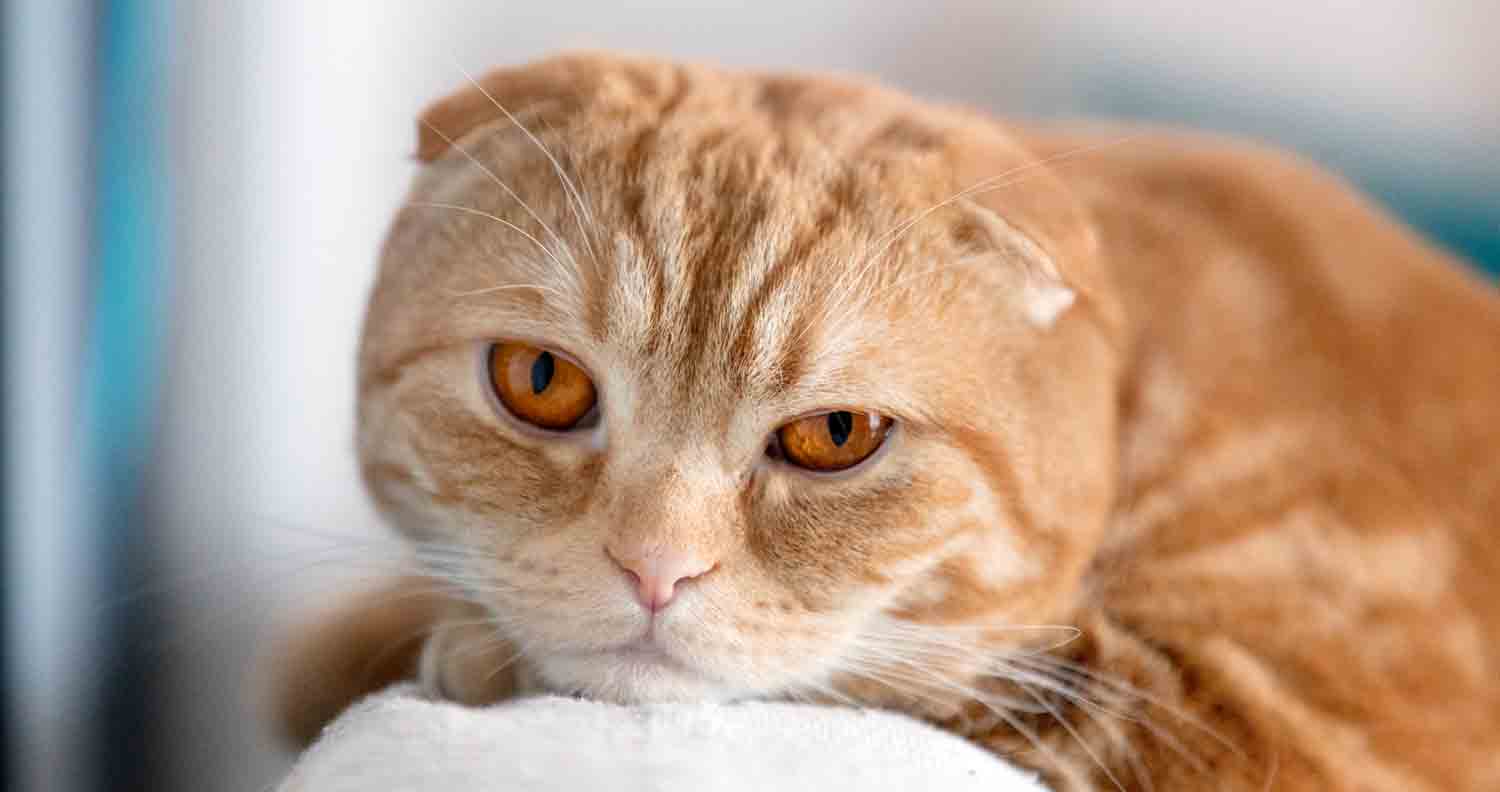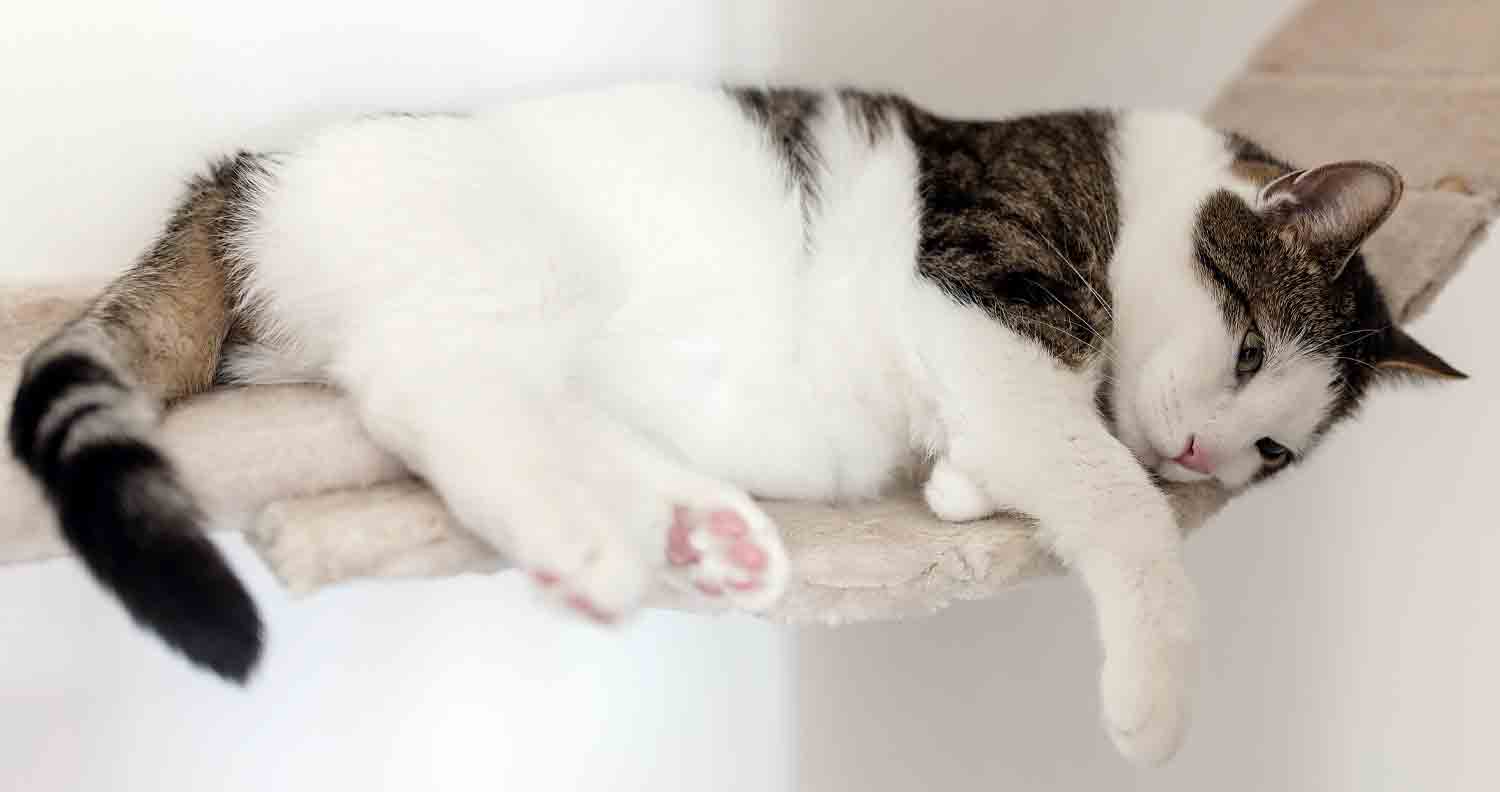Pyometra in Cats (Detecting Pyometra Symptoms)
Share:
Pyometra is a uterine infection that primarily occurs in unspayed intact female cats.
The first signs appear 6-24 weeks after the heat cycle. Pyometra is a bacterial infection that starts in the vaginal tract and most of the time migrates to other parts of the body through the circulatory system.
If no attempt is made to treat this infection, it may well be life-threatening.
As a responsible cat owner, you should know the pyometra symptoms to be able to spot it early, attend a veterinarian, and save your kitty's life.

Read this next: Cancer in Cats
What is Pyometra?
Pyometra is determined by the hormonal changes in the reproductive tract of cats that allow bacteria, such as E Coli, to grow and spread throughout the body. In the case of open pyometra, the cervix is open and lets the pus go out.
Closed pyometra is more dangerous as it happens when the cervix is tightly closed, preventing the drainage of pus and making the uterus swell and eventually rupture.
An uncommon type of this infection is called uterine stump pyometra. It may occur in spayed cats that have been spayed incompletely.
It may be some ovarian tissue left intact after the surgery that continues to trigger hormonal changes in the cat's body during the heat cycle.
Pyometra Symptoms
The symptoms of pyometra in cats differ based on what type of pyometra they suffer from - open or closed.
Some symptoms are specific, others are common to many other cat diseases. You should immediately call the vet if you notice at least one specific symptom in combination with other signs.
Pus-containing Vaginal Discharge
A cat afflicted with pyometra will have a purulent vaginal discharge. You may not notice the discharge as your cat may be quick in cleaning it up.
However, you can spot the purulent matter on your cat's bedding, toys, carpet, or furniture.
Bloated Abdomen
A closed pyometra doesn't have the cervix open which means the pus accumulates inside the body. As a result, the abdominal cavity of your pet gets visibly bloated, causing a lot of suffering and abdominal pain to your cat.
Increased Urination
The toxins generated by pyometra will attack the kidneys and reduce their efficiency. As a result, they will fail to hold the liquid, causing your cat to urinate more often than usual and sometimes do it outside the litterbox.
Frequent Licking of the Genital Area
When your cat deals with an open pyometra, it will lick at the vaginal opening frequently to clean up the pus discharge.

Read this next: Is my cat Stressed?
Lethargy and Loss of Appetite
The bacteria present in both types of pyometra release toxins that cause a general state of illness.
Your cat will become apathetic and lack appetite. Skipped meals will inevitably lead to your feline losing much weight.
Vomiting and Diarrhea
In case of sepsis (exaggerated reaction of the immune system to an infection), your cat may experience nausea and diarrhea.
This will dehydrate the feline's body, making it feel unwell and lose enthusiasm for any activity. Dehydration will also trigger exaggerated thirst in your cat.
Pyometra Uterine Infection Causes
Pyometra is caused by a number of concurrent factors. When they are in heat, cats develop a thicker uterine lining, preparing for pregnancy.
After a series of cycles when the lining thickened but no pregnancy occurred, cysts will form on the uterine lining.
During the heat, the vaginal opening gets wider to allow the sperm to enter. Unfortunately, this makes harmful bacteria get inside as well.
The increased levels of progesterone do not allow the uterus muscles to contract and throw out toxins and bacteria.
Also, progesterone blocks the access of white blood cells to the uterus so they can't destroy the sperm.
Ultimately, there is no one to fight the bacteria that accumulates in the cat's reproductive tract.
Pyometra Diagnosis
A vet will investigate your cat's body and medical history to see whether it has been spayed or not. If it turns out that your cat is not spayed and exhibits pyometra symptoms, it will be exposed to a series of tests.
First, the blood test will be made to determine whether the count of white blood cells is within normal boundaries.
The vaginal cytology will help to see if certain bacteria and leukocytes are still in the uterus. The vet might also perform X-rays or ultrasounds so he can spot the enlargement and inflammation of the uterus as well as potential pus accumulations.

Read this next: 12 Best Urinary Cat Foods of 2022
Pyometra Treatment
The most effective way to treat pyometra is by surgery.
The vet will remove the infected reproductive organs. Pyometra surgery is more difficult than spaying because more care is needed to prevent the uterus from leaking and rupturing as it is taken out.
Additional stabilization may be needed in cats that have sepsis as a result of pyometra.
Medication treatment is also possible but it's not preferable.
The vet will prescribe prostaglandins that inhibit the progesterone hormone and allow the uterus muscles to contract and expel the toxic fluid.
The results are pretty messy compared to the surgical extraction of the uterus which ensures your cat will never again spread discharge around your house.
Prostaglandins are not recommended for severely ill felines.

Prognosis
The vet will also offer antibiotics and painkillers after the surgery to speed up the recovery. The surgery gets most of the cats completely treated and back to normal life unless it causes abdominal contamination, which is least likely if you choose a licensed and reputable vet.
Some cats may experience permanent kidney damage after the surgery, which is not the worst that could happen but still will change some of their habits.
You will find your kitty drinking more water and urinating more often than usual.
Pyometra in Cats: The Verdict
Pyometra in cats is a nasty illness and can be life-threatening to your cat. However, it can easily be avoided and be prevented by spaying your feline.
This procedure will eliminate the ovaries so that the cat doesn't get in the heat and progesterone is not released.
The removal of the uterus is also recommended as it will lower the risk of an infection that can potentially lead to pyometra.
Spaying helps to prevent other severe conditions in cats such as uterine cancer and breast cancer.
Read this next: How To Get Rid Of Cat Pee Smell
Share:

